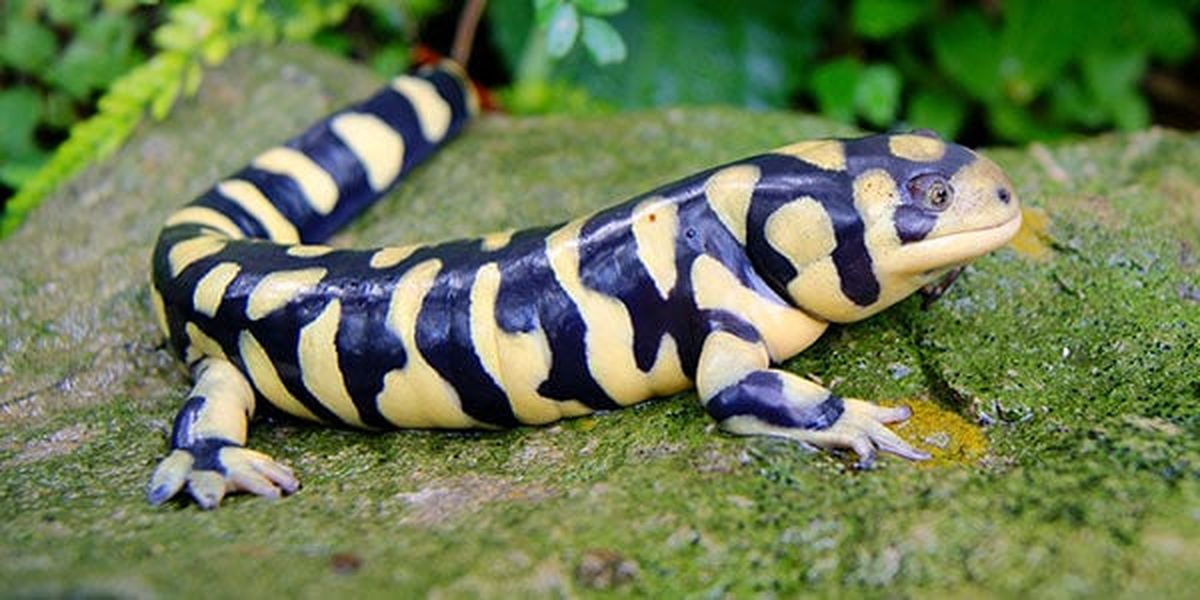Cool Critters: Deep in a burrow near you - a salamander to make you smile

A black and yellow salamander adorned with small, bulging eyes and a goofy grin lives throughout Eastern Washington and North Idaho. With an average length of 7 inches, it is among the largest land-dwelling salamanders in North America.
Chances are, you’ve never seen one. In fact, few people do. How can a grinning, bumblebee-colored creature the length of a banana go unnoticed?
The western tiger salamander, scientifically known as Ambystoma mavortium, lives up to its nickname “mole salamander,” by spending most of its life underground. When the amphibian does come out – mostly at night or after a big rain – it appears to have slithered out of a Disney sci-fi movie.
“It’s a very cool animal. If you’re lucky enough to see one, they really stand out,” said district biologist Scott Fitkin of the Washington Department of Fish and Wildlife, adding that the western tiger salamander is widespread on the eastern side of the state.
Because of their secretive and mostly nocturnal existence, we don’t notice them like other amphibians such as frogs and toads, he explained.
“They’ve been known to burrow in the ground as deep as 2 feet,” he said.
In areas with soft soil, the salamander digs its own burrows to escape hot or cold temperatures at the surface. Imagine, then, a jovial-looking salamander with a rounded snout and four stubby legs emerging from the ground at night. Under the cover of darkness, it hunts for food such as slugs, ants, crickets and young mice.
“Tiger salamanders are voracious predators,” Fitkin said.
But they, too, have predators, including snakes, owls, bobcats and racoons. They are especially vulnerable in the spring when they leave their burrows and crawl to a nearby pond, marsh or slow-moving stream to breed. Although a brief trek for humans on foot, it is an epic migration for tiger salamanders.
After the males and females congregate and mate, eggs hatch in three to four weeks and tadpole-like larvae emerge, according to the book “Salamanders of the United States and Canada.” Depending on water temperatures, the availability of food and other factors, the larvae metamorphose into juveniles with full-grown lungs and strong legs. Eventually, they scramble out of the water and onto land. All the while, their oversized grins give the impression they’re having a jolly good time.
Perhaps the amphibian’s cheerful appearance is powered by its long lifespan. Western tiger salamanders are known to live 14 years or so, according to the National Wildlife Federation.
Largely hidden from human sight and wildlife cameras, it can be challenging for scientists to accrue long-term data on this curious salamander’s life history, according to The Orianne Society, a science and conservation organization dedicated to amphibians and reptiles.
“Much of their ecology will likely remain hidden until technology allows us to track animals underground more consistently,” the organization states on its website.
Tiger salamanders are also known to shimmy inside abandoned rodent burrows. Sometimes after overnight rainstorms, they emerge from the ground during daytime to take damp jaunts in search of insects. But even then, it can be hard to spot them beneath logs, rocks and leaf litter, Fitkin said.
“I like to remind people that the tiger salamander isn’t rare; it’s just rarely seen,” he said.
Should you see one, consider yourself lucky. Also, be prepared for a comical smirk to meet your surprised gaze.